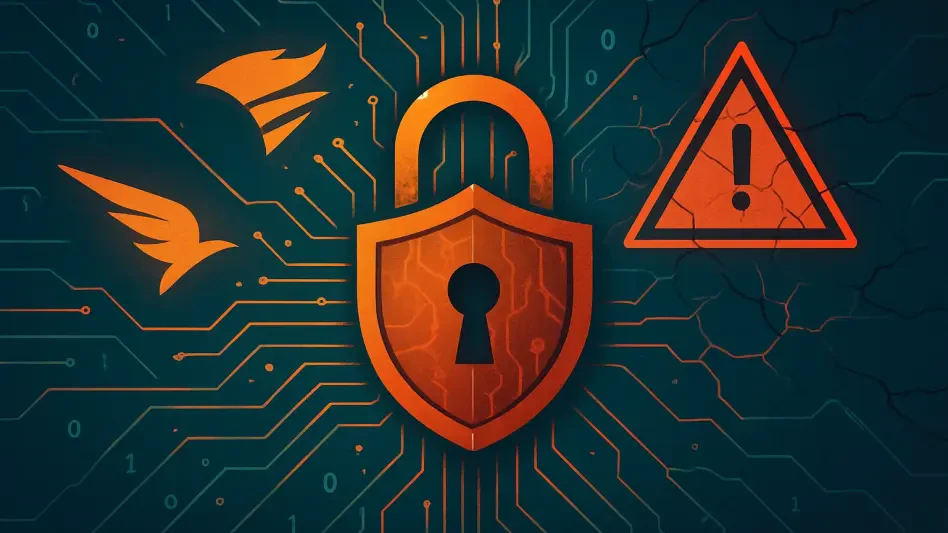Imagine a critical IT management tool, relied upon by thousands of enterprises, suddenly becoming a gateway for malicious actors to seize complete control over sensitive systems, turning a trusted solution into a severe liability. This scenario became reality with the discovery of a severe vulnerability in SolarWinds’ Web Help Desk software, identified as CVE-2025-26399, carrying a near-perfect CVSS score of 9.8. This flaw, which allows remote code execution, has reignited concerns within the cybersecurity community about the safety of widely used infrastructure tools. Given SolarWinds’ history of high-profile breaches, the stakes couldn’t be higher. This roundup gathers diverse opinions, actionable tips, and critical analyses from industry voices to unpack the implications of this vulnerability and guide organizations on how to respond effectively.
Unpacking the Vulnerability: What Experts Are Saying
The cybersecurity landscape is abuzz with discussions about CVE-2025-26399, a flaw rooted in the deserialization of untrusted data in Web Help Desk versions 12.8.7 and earlier. Many industry professionals highlight the severity of this issue, noting that it enables attackers to execute arbitrary commands as SYSTEM, effectively granting full control over affected systems. The consensus among analysts is that the high CVSS score reflects not just the technical danger but also the ease with which this flaw could be exploited without authentication.
Differing perspectives emerge on SolarWinds’ response to the crisis. While some experts commend the company for releasing a hotfix in version 12.8.7 HF1 relatively quickly, others express skepticism about the timing, pointing out that this vulnerability bypasses patches for two earlier flaws from just months ago. A recurring theme in these discussions is whether reactive fixes can truly address what appears to be a deeper, systemic issue in the software’s architecture, particularly in components like AjaxProxy that have been targeted before.
A broader concern raised by several cybersecurity researchers focuses on the real-world impact of such vulnerabilities. IT management tools like Web Help Desk often sit at the heart of enterprise environments, making them prime targets for attackers seeking access to sensitive data and systems. The urgency to update is echoed across the board, with many stressing that delays in patching could lead to catastrophic breaches, especially given that related flaws have already been exploited in the wild according to government catalogs of known threats.
Historical Context: Does Past Performance Predict Future Risks?
Lessons from Previous Breaches
Looking at SolarWinds’ track record, numerous industry observers draw parallels between this latest flaw and the infamous supply chain attack from a few years back, which compromised multiple government entities. That incident left a lasting mark on the company’s reputation, and several experts argue that it continues to shape how the cybersecurity community evaluates SolarWinds’ security posture. The recurring nature of severe vulnerabilities fuels a narrative of lingering distrust among some professionals.
A distinct angle comes from those who analyze the broader implications of repeated security lapses. They suggest that the pattern of deserialization issues points to fundamental challenges in how critical software is developed and maintained. Some voices in the field argue that SolarWinds, due to its high-profile history, may face disproportionate scrutiny compared to peers, but others counter that such attention is warranted given the critical role its tools play in enterprise ecosystems.
Another viewpoint emphasizes the learning opportunities from past incidents. Certain analysts believe that while history casts a shadow, it also provides a roadmap for improvement. They note that the industry as a whole must use these events to push for stricter standards in software security, urging vendors like SolarWinds to adopt more proactive measures rather than relying solely on post-discovery patches to mitigate risks.
Patterns of Deserialization Flaws: A Wider Industry Issue
Deserialization vulnerabilities, such as the one at the core of CVE-2025-26399, are not unique to SolarWinds, according to many in the cybersecurity space. A number of technical experts point out that these flaws represent a persistent challenge across the software industry, particularly in tools designed to manage IT infrastructure. The AjaxProxy component, repeatedly exploited in Web Help Desk, serves as a stark reminder of how specific coding practices can become recurring weak points if not addressed at the root.
Contrasting opinions arise on how to tackle this widespread issue. Some professionals advocate for a complete overhaul of how data validation is handled in such software, suggesting that vendors prioritize secure-by-design principles over quick fixes. Others, however, believe that the complexity of modern IT tools makes it nearly impossible to eliminate all vulnerabilities, proposing instead that organizations focus on robust monitoring and rapid response strategies to minimize damage.
An additional perspective considers the varying levels of compliance across regions. Certain industry watchers note that while some areas may enforce strict patching deadlines, others lag behind due to resource constraints or differing regulatory frameworks. This disparity, they argue, creates uneven risk exposure globally, prompting a call for more standardized guidelines to ensure that critical updates are applied uniformly across user bases.
Practical Tips: Safeguarding Systems Against Threats
Drawing from a variety of cybersecurity advisors, the immediate recommendation for organizations using Web Help Desk is to apply the hotfix in version 12.8.7 HF1 without delay. Beyond this basic step, many suggest implementing network-level protections, such as restricting access to the software’s exposed interfaces, to reduce the attack surface. Regular audits of system privileges are also widely advised to prevent attackers from gaining unchecked control even if a breach occurs.
Another set of insights focuses on proactive monitoring. Several IT security specialists emphasize the importance of deploying tools that can detect unusual activity on systems running critical software. They recommend integrating vulnerability scanning solutions to identify unpatched flaws before they can be exploited, alongside staying updated on alerts from authoritative bodies like government cybersecurity agencies for the latest threat intelligence.
A final piece of advice from multiple sources centers on fostering a culture of preparedness within IT teams. Training staff to recognize potential security risks and respond swiftly to patch notifications is seen as vital. Some experts also encourage organizations to diversify their toolsets, reducing reliance on a single vendor’s ecosystem to mitigate the impact of vendor-specific vulnerabilities like those seen in this case.
Final Reflections and Next Steps
Reflecting on the discussions that unfolded around CVE-2025-26399, it is clear that the cybersecurity community views this flaw as a significant wake-up call for both SolarWinds and the broader industry. Experts from various corners weighed in with a mix of concern and practical guidance, highlighting the urgency of addressing not just this specific vulnerability but also the underlying patterns that allowed it to emerge. The historical context of SolarWinds’ past breaches added depth to the conversation, underscoring the challenges of rebuilding trust.
Looking ahead, organizations are encouraged to prioritize a multi-layered security approach, combining timely updates with robust monitoring and access controls. A key takeaway is the need for industry-wide collaboration to establish stronger standards for software development, particularly for tools integral to enterprise operations. As threats continue to evolve, staying informed through trusted cybersecurity resources and participating in knowledge-sharing forums can help IT professionals anticipate and counter emerging risks effectively.








